Cd9 Protects Photoreceptors from Injury and Potentiates Edn2 Expression
- PMID: 32150249
- PMCID: PMC7401443
- DOI: 10.1167/iovs.61.3.7
Cd9 Protects Photoreceptors from Injury and Potentiates Edn2 Expression
Abstract
Purpose: Cd9 is a tetraspanin membrane protein that plays various roles in tissue development and disease pathogenesis, especially in cancer, but the expression patterns and function of Cd9 in retinal development and disease are not well understood. We asked its roles during retinal photoreceptor degeneration by using CD9-knockout mice.
Methods: Cd9 knockout mice and rd1 mice were used to examine roles of Cd9 for progression of photoreceptor degeneration. Reverse transcription-polymerase chain reaction and immunohistochemistry were mainly used as analytical methods.
Results: Cd9 transcripts were only weakly expressed in retina at embryonic day 14, but its expression level subsequently increased and peaked at around postnatal day 12. In 6-week-old female mice derived retina, mRNA expression decreased slightly but was maintained at a significant level. Published RNA-sequencing data and immunohistochemistry indicated that Cd9 was expressed abundantly in Müller glia and weakly in other retinal neurons. Notably, when photoreceptors were damaged, Cd9 expression was increased in rod photoreceptors and decreased in Müller glia. Cd9 knockout mice retinas developed normally; however, once the retina suffered damage, degeneration of photoreceptors was more severe in Cd9 knockout retinas than control retinas. Induction of Edn2, which is known to protect against photoreceptor damage, was severely hampered. In addition, induction of Socs3, which is downstream of gp130 (Il6st), was weaker in Cd9 knockout retinas.
Conclusions: Taken together, these findings indicate that, although Cd9 was dispensable for normal gross morphological development, it protected rod photoreceptors and enhanced Edn2 expression, possibly through modulation of gp130 signaling.
Conflict of interest statement
Disclosure:
Figures

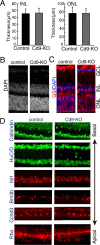
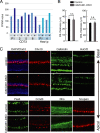
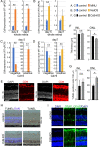
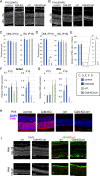
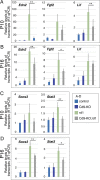
Similar articles
-
Different effects of valproic acid on photoreceptor loss in Rd1 and Rd10 retinal degeneration mice.Mol Vis. 2014 Nov 4;20:1527-44. eCollection 2014. Mol Vis. 2014. PMID: 25489226 Free PMC article.
-
Differential Expression of IL-6/gp130 Cytokines, Jak-STAT Signaling and Neuroprotection After Müller Cell Ablation in a Transgenic Mouse Model.Invest Ophthalmol Vis Sci. 2015 Apr;56(4):2151-61. doi: 10.1167/iovs.14-15695. Invest Ophthalmol Vis Sci. 2015. PMID: 25722214
-
Endothelin-2-mediated protection of mutant photoreceptors in inherited photoreceptor degeneration.PLoS One. 2013;8(2):e58023. doi: 10.1371/journal.pone.0058023. Epub 2013 Feb 28. PLoS One. 2013. PMID: 23469133 Free PMC article.
-
The genomic response to retinal disease and injury: evidence for endothelin signaling from photoreceptors to glia.J Neurosci. 2005 May 4;25(18):4540-9. doi: 10.1523/JNEUROSCI.0492-05.2005. J Neurosci. 2005. PMID: 15872101 Free PMC article.
-
Müller Cell Metabolic Signatures: Evolutionary Conservation and Disruption in Disease.Trends Endocrinol Metab. 2020 Apr;31(4):320-329. doi: 10.1016/j.tem.2020.01.005. Epub 2020 Feb 24. Trends Endocrinol Metab. 2020. PMID: 32187524 Free PMC article. Review.
Cited by
-
CD9 protects the sperm from cytotoxic factors in the epididymis as extracellular components.MicroPubl Biol. 2023 Sep 20;2023:10.17912/micropub.biology.000950. doi: 10.17912/micropub.biology.000950. eCollection 2023. MicroPubl Biol. 2023. PMID: 37799198 Free PMC article.
-
Release of VAMP5-positive extracellular vesicles by retinal Müller glia in vivo.J Extracell Vesicles. 2022 Sep;11(9):e12254. doi: 10.1002/jev2.12254. J Extracell Vesicles. 2022. PMID: 36043482 Free PMC article.
-
Mapping membrane lipids in the developing and adult mouse retina under physiological and pathological conditions using mass spectrometry.J Biol Chem. 2021 Jan-Jun;296:100303. doi: 10.1016/j.jbc.2021.100303. Epub 2021 Jan 16. J Biol Chem. 2021. PMID: 33465374 Free PMC article.
-
CD82 palmitoylation site mutations at Cys5+Cys74 affect EGFR internalization and metabolism through recycling pathway.Acta Biochim Biophys Sin (Shanghai). 2022 Mar 25;54(3):400-408. doi: 10.3724/abbs.2022011. Acta Biochim Biophys Sin (Shanghai). 2022. PMID: 35538033 Free PMC article.
References
-
- Powner D, Kopp P, Monkley SJ, Critcheley DR, Berditchevski. Tetraspanin CD8 in cell migration. Biochem Soc Trans. 2011; 39: 563–567. - PubMed
-
- Miyake M, Nakano K, Itoi SI, Koh T, Taki T. Motility-related protein-a (MRP-1/CD9) reduction as a factor of poor prognosis in breast cancers. Cancer Res. 1996; 56: 1244–1249. - PubMed
-
- Helmler ME. Tetraspanin proteins promote multiple cancer stages. Nat Rev Cancer. 2014; 14: 49–60. - PubMed
MeSH terms
Substances
LinkOut - more resources
Full Text Sources
Molecular Biology Databases

